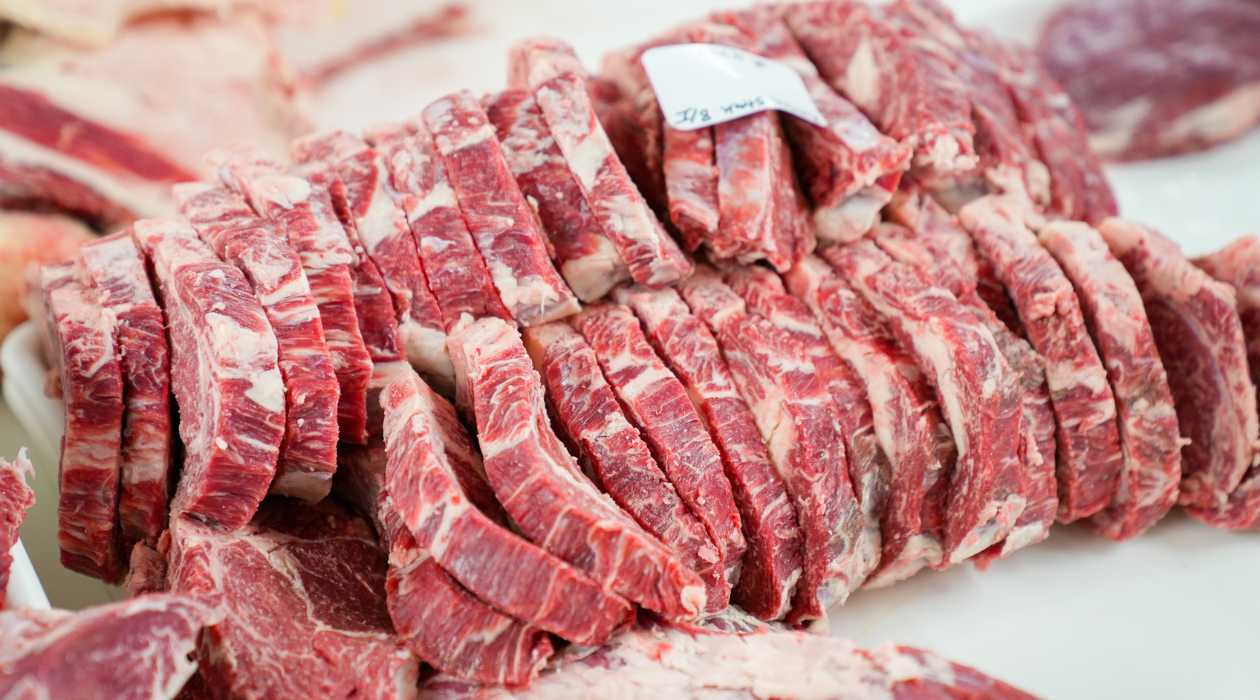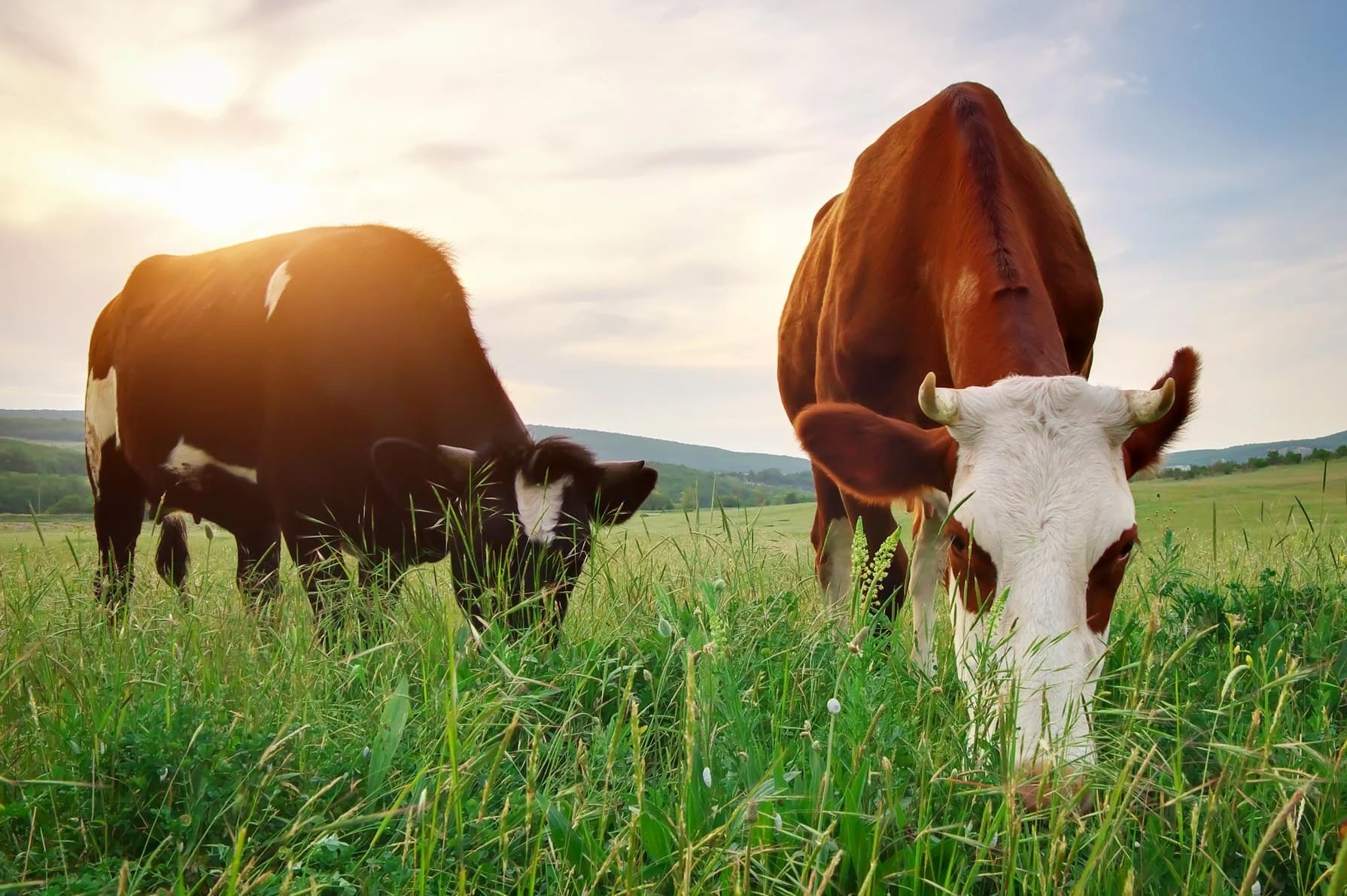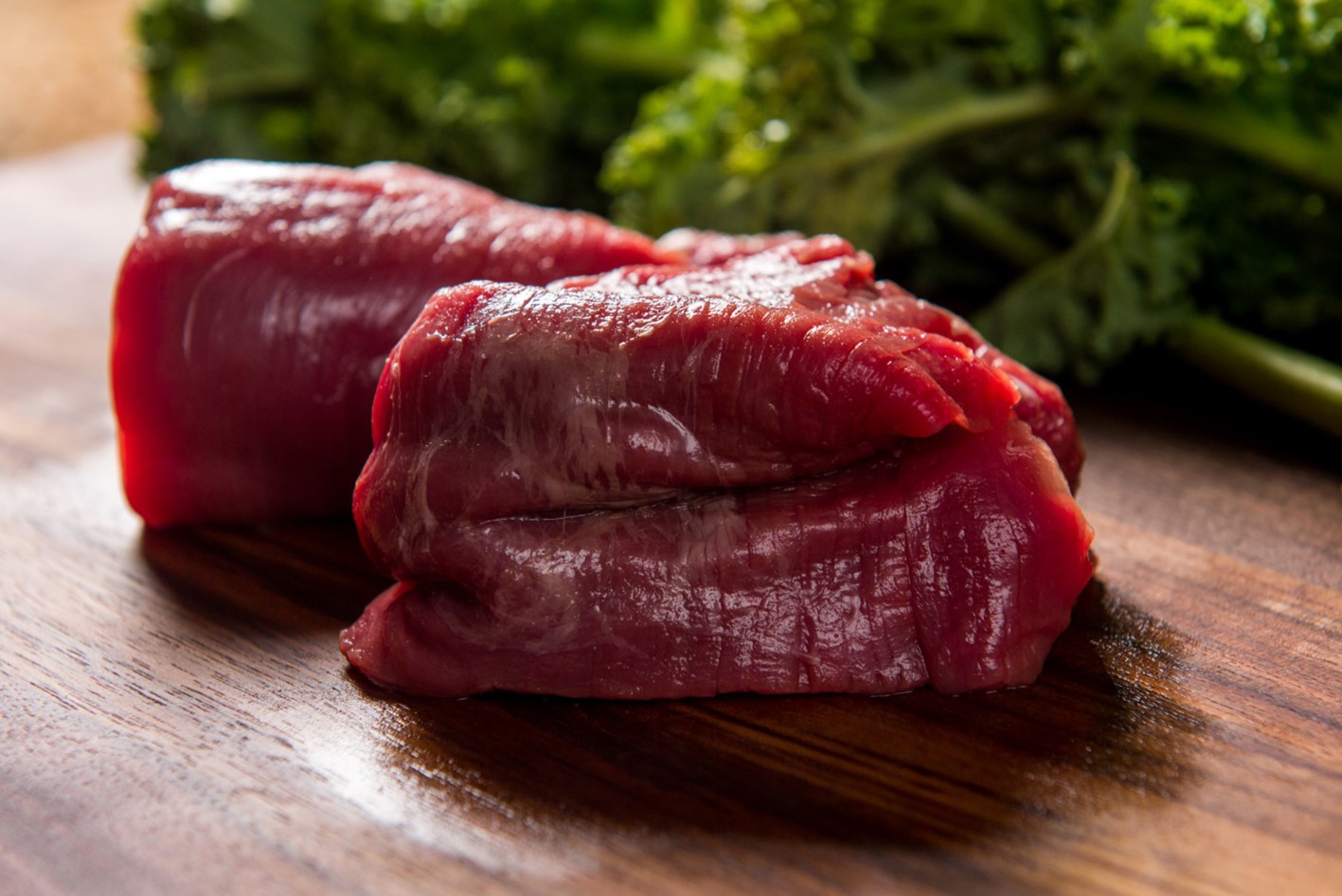Home>Gardening & Outdoor>Landscaping Ideas>What Does Grass-Fed Beef Taste Like


Landscaping Ideas
What Does Grass-Fed Beef Taste Like
Modified: September 2, 2024
Discover the unique flavor of grass-fed beef and explore landscaping ideas to elevate your outdoor space. Learn what sets grass-fed beef apart and get inspired to transform your surroundings.
(Many of the links in this article redirect to a specific reviewed product. Your purchase of these products through affiliate links helps to generate commission for Storables.com, at no extra cost. Learn more)
Introduction
When it comes to savoring a juicy, tender steak or sizzling burger, the choice of beef can significantly impact the overall dining experience. While the distinction between grass-fed and grain-fed beef has garnered widespread attention, the focus on grass-fed beef has intensified due to its potential health benefits and environmental sustainability. In this article, we will delve into the unique characteristics of grass-fed beef, particularly exploring its taste profile. Understanding what grass-fed beef tastes like can offer valuable insights for both culinary enthusiasts and health-conscious consumers.
Grass-fed beef, as the name suggests, comes from cattle that predominantly graze on natural pasture. This natural diet sets it apart from grain-fed beef, which is typically raised on a diet of corn and soy in feedlots. The differences in feeding practices not only influence the nutritional composition of the meat but also impart distinct flavors and textures to the final product.
Exploring the taste of grass-fed beef involves an intriguing journey into the factors that shape its flavor profile. From the animal's diet and lifestyle to the cooking methods used, every element contributes to the overall sensory experience. By unraveling the nuances of grass-fed beef's taste and texture, we can gain a deeper appreciation for this wholesome and flavorful culinary delight.
Join us as we embark on a flavorful exploration of grass-fed beef, uncovering its unique attributes and discovering the best ways to savor its natural goodness. Whether you're a culinary enthusiast, a health-conscious individual, or simply someone who appreciates the art of savoring a delectable meal, understanding the taste of grass-fed beef is sure to elevate your dining experiences.
Key Takeaways:
- Grass-fed beef offers a lean, earthy taste with herbaceous notes, reflecting the animals’ natural diet and sustainable grazing practices.
- Cooking grass-fed beef requires gentle methods to preserve its tenderness, such as marination, low and slow cooking, and thoughtful seasoning for a flavorful dining experience.
Read more: What Is Grass-Fed Beef
Grass-Fed vs. Grain-Fed Beef
The distinction between grass-fed and grain-fed beef extends beyond the animals’ diet, encompassing various aspects that ultimately influence the taste and quality of the meat.
Grass-fed beef is derived from cattle that primarily graze on natural pasture, consuming a diet rich in grass and other forage. This grazing lifestyle allows the cattle to roam freely in open spaces, resulting in leaner and more muscular animals. In contrast, grain-fed beef originates from cattle raised in feedlots and fed a diet predominantly comprising corn and soy. The confined living conditions and high-energy grain diet contribute to the animals’ rapid weight gain and marbling of fat within the muscle tissue.
These distinct rearing methods give rise to differences in the composition and flavor of the meat. Grass-fed beef is renowned for its leaner profile, boasting higher levels of omega-3 fatty acids, conjugated linoleic acid (CLA), and antioxidant vitamins such as vitamin E. On the other hand, grain-fed beef tends to exhibit more marbling, resulting in a richer and buttery flavor due to the higher fat content.
From an environmental standpoint, grass-fed beef is often lauded for its sustainable practices, as it relies on natural grazing and minimizes the need for intensive grain production. This aligns with the principles of regenerative agriculture, promoting biodiversity and soil health. In contrast, the production of grain-fed beef typically involves the cultivation of large-scale monoculture crops, which can contribute to environmental challenges such as deforestation and intensive water usage.
When comparing the taste of grass-fed and grain-fed beef, it’s essential to consider the impact of their respective diets and lifestyles on the meat’s flavor profile. The next section will delve deeper into the factors influencing the taste of grass-fed beef, shedding light on the distinctive sensory experience it offers.
Factors Affecting the Taste of Grass-Fed Beef
The taste of grass-fed beef is shaped by a myriad of factors, each contributing to its unique flavor profile and sensory attributes. Understanding these influences can provide valuable insights into the nuances of grass-fed beef’s taste and texture.
1. Diet and Forage
The natural diet of grass-fed cattle plays a pivotal role in shaping the taste of the beef. As these animals graze on a diverse array of grasses, herbs, and legumes, the flavors and nutrients present in the forage directly influence the meat’s taste. The terroir, or the specific environmental conditions of the grazing land, also imparts distinctive regional flavors to the beef, akin to the concept of terroir in wine.
2. Exercise and Muscle Development
Grass-fed cattle engage in more physical activity due to their grazing lifestyle, leading to increased muscle development. This results in leaner cuts of meat with a firmer texture. The meat’s natural lean composition contributes to its distinct mouthfeel and tenderness, offering a wholesome eating experience.
3. Age and Breed of Cattle
The age and breed of the cattle can also influence the taste of grass-fed beef. Younger animals typically yield meat with a milder flavor, while older cattle may produce beef with a more pronounced, robust taste. Additionally, different cattle breeds exhibit varying flavor profiles, adding diversity to the taste spectrum of grass-fed beef.
4. Environmental Factors
The environment in which the cattle graze, including factors such as climate, soil composition, and vegetation, contributes to the complexity of grass-fed beef’s taste. For example, cattle raised in lush, biodiverse pastures may yield beef with nuanced herbal and floral notes, reflecting the natural diversity of their grazing environment.
5. Stress Levels and Animal Welfare
The lower-stress environment experienced by grass-fed cattle can positively impact the meat’s flavor. Reduced stress levels and the absence of overcrowded feedlots contribute to a more relaxed and contented state in the animals, potentially influencing the biochemical composition of the meat and enhancing its overall taste.
By considering these multifaceted factors, we gain a deeper appreciation for the intricate interplay of nature, animal husbandry, and environmental influences in shaping the taste of grass-fed beef. The next section will delve into the captivating flavor profile of grass-fed beef, offering a sensory exploration of its distinctive taste and aroma.
Flavor Profile of Grass-Fed Beef
Exploring the flavor profile of grass-fed beef unveils a rich tapestry of sensory nuances, reflecting the natural purity and diversity of the animals’ grazing environment. From subtle herbal undertones to robust earthy notes, the taste of grass-fed beef embodies a harmonious blend of flavors that captivate the palate.
1. Earthy and Nutty Undertones
Grass-fed beef often exhibits earthy and nutty undertones, reminiscent of the natural forage consumed by the cattle. These flavors are influenced by the diverse array of grasses, herbs, and legumes present in the animals’ diet, infusing the meat with a distinct terroir that reflects the character of the grazing land.
2. Herbaceous and Floral Notes
The grazing lifestyle of grass-fed cattle imparts herbaceous and floral notes to the beef, offering a delightful interplay of delicate flavors. The varied botanical composition of the pasture contributes to the development of these nuanced aromas, creating a sensory experience that evokes the essence of the natural landscape.
3. Clean and Pure Taste
One of the hallmark traits of grass-fed beef is its clean and pure taste, characterized by a lack of overwhelming richness or heaviness often associated with grain-fed beef. The lean composition of the meat allows the natural flavors to shine through, resulting in a refreshing and wholesome eating experience.
4. Rich and Savory Depth
Despite its leanness, grass-fed beef boasts a rich and savory depth that stems from the animals’ natural diet and muscular development. This depth of flavor contributes to the overall complexity of the meat, offering a satisfying umami quality that enhances the culinary appeal of grass-fed beef.
5. Regional and Seasonal Variations
The flavor profile of grass-fed beef exhibits regional and seasonal variations, influenced by factors such as terroir, climate, and the availability of diverse forage. This dynamic interplay of environmental elements results in a spectrum of flavors, allowing for an ever-evolving exploration of grass-fed beef’s taste across different geographical locations and times of the year.
By embracing the diverse flavor profile of grass-fed beef, we embark on a sensory journey that celebrates the natural essence of the land and the animals that roam upon it. The next section will delve into the texture and tenderness of grass-fed beef, unraveling the tactile dimensions of this culinary treasure.
Grass-fed beef has a more earthy and slightly gamey flavor compared to grain-fed beef. It tends to be leaner and have a stronger beefy taste.
Texture and Tenderness of Grass-Fed Beef
The texture and tenderness of grass-fed beef encompass a captivating interplay of sensory attributes, reflecting the natural leanness and muscular development of the cattle. From its firm yet yielding texture to the succulent tenderness that defines each bite, grass-fed beef offers a wholesome and gratifying eating experience that resonates with connoisseurs and culinary enthusiasts alike.
1. Lean and Firm Texture
Grass-fed beef is renowned for its lean and firm texture, attributed to the animals’ grazing lifestyle and increased muscle development. The absence of excessive marbling, characteristic of grain-fed beef, results in a meat texture that is notably lean yet possesses a satisfying firmness. This texture provides a substantial mouthfeel, allowing the natural flavors of the beef to shine through with each bite.
2. Juicy and Succulent Tenderness
Despite its leanness, grass-fed beef exhibits a remarkable juiciness and succulent tenderness that elevates the dining experience. The natural intramuscular fat present in grass-fed beef, combined with the animals’ active lifestyle, contributes to the development of tender and flavorful cuts that delight the palate with each bite.
3. Resilient and Satisfying Chew
The resilient chew of grass-fed beef reflects the animals’ muscular development and natural diet, offering a satisfying textural experience that is both substantial and gratifying. This resilience, coupled with the meat’s succulent tenderness, creates a harmonious balance that enhances the overall enjoyment of grass-fed beef dishes.
4. Enhanced Mouthfeel and Flavors
The texture and tenderness of grass-fed beef play a pivotal role in enhancing the mouthfeel and flavors of the meat. The absence of excessive fat marbling allows the natural flavors to take center stage, resulting in a pure and unadulterated sensory experience that resonates with those who appreciate the authentic essence of high-quality beef.
5. Culinary Versatility
The texture and tenderness of grass-fed beef lend themselves to a wide range of culinary applications, from tender steaks and succulent roasts to flavorful ground beef for burgers and meatballs. The natural attributes of grass-fed beef make it a versatile ingredient that can be enjoyed in various culinary creations, each showcasing its distinctive texture and tenderness.
By embracing the texture and tenderness of grass-fed beef, we immerse ourselves in a sensory journey that celebrates the natural purity and wholesome qualities of this exceptional culinary treasure. The next section will explore the art of cooking grass-fed beef, offering insights into the best practices for savoring its unique flavors and textures.
Read more: What Is Considered Grass-Fed Beef
Cooking Grass-Fed Beef
Cooking grass-fed beef is an art that requires a nuanced approach to accentuate its natural flavors and textures while ensuring optimal tenderness and succulence. From selecting the right cuts to employing cooking techniques that complement its lean profile, mastering the culinary craft of preparing grass-fed beef unlocks a world of delectable dining experiences.
1. Cuts and Marination
When working with grass-fed beef, selecting the appropriate cuts is essential. Due to its lean composition, grass-fed beef benefits from marination to enhance tenderness and flavor. Acidic marinades featuring ingredients such as citrus juices, vinegar, and tenderizing enzymes can help break down the muscle fibers gently, resulting in more tender and succulent meat.
2. Low and Slow Cooking
Given its leanness, grass-fed beef responds well to low and slow cooking methods that allow for gentle and gradual heat penetration. Techniques such as braising, slow roasting, and sous vide cooking can help preserve the meat’s natural juices and tenderness, resulting in moist and flavorful dishes that showcase the unique qualities of grass-fed beef.
3. Resting and Slicing
After cooking, allowing grass-fed beef to rest before slicing is crucial to retain its juiciness and tenderness. Resting the meat enables the juices to redistribute, ensuring that each slice remains succulent and flavorful. When slicing grass-fed beef, cutting against the grain can further enhance its tenderness, yielding delectably tender and palatable servings.
4. Seasoning and Flavor Pairings
Seasoning grass-fed beef with complementary flavors can elevate its taste profile. Utilizing aromatic herbs, robust spices, and umami-rich ingredients can accentuate the natural flavors of the meat, creating harmonious flavor pairings that resonate with the lean yet savory qualities of grass-fed beef.
5. Grilling and Searing Techniques
Grilling and searing techniques can be employed to impart a delightful caramelized crust to grass-fed beef, enhancing its texture and adding depth to its flavor profile. Preheating the grill or pan adequately and achieving a perfect sear can create a contrast between the exterior crust and the tender interior, resulting in a memorable dining experience.
By embracing these cooking principles, enthusiasts can unlock the full potential of grass-fed beef, creating culinary masterpieces that honor its natural purity and wholesome attributes. Whether it’s a tender steak, succulent roast, or flavorful burger, the art of cooking grass-fed beef offers a canvas for culinary creativity and gastronomic delight.
Conclusion
Exploring the taste, texture, and culinary artistry of grass-fed beef unveils a captivating narrative of natural purity, wholesome flavors, and culinary possibilities. From its lean and muscular composition to the diverse flavor profile shaped by the animals’ grazing lifestyle, grass-fed beef stands as a testament to the harmonious interplay of nature, animal husbandry, and culinary craftsmanship.
Understanding what grass-fed beef tastes like goes beyond a mere sensory exploration; it embodies a celebration of sustainable agriculture, ethical animal rearing, and the appreciation of unadulterated culinary experiences. The earthy and nutty undertones, herbaceous and floral notes, and the clean, pure taste of grass-fed beef reflect the essence of the natural landscape and the animals that graze upon it.
The texture and tenderness of grass-fed beef offer a gratifying tactile experience, characterized by its lean yet yielding nature and succulent tenderness that delights the palate with each bite. Embracing the art of cooking grass-fed beef unlocks a world of culinary creativity, where low and slow techniques, thoughtful seasoning, and precision in preparation elevate the natural qualities of the meat, resulting in dishes that honor its intrinsic flavors and textures.
As we savor the unique attributes of grass-fed beef, we embark on a sensory journey that transcends the boundaries of culinary appreciation, encapsulating a profound connection to the land, the animals, and the sustainable practices that define the essence of grass-fed beef. Whether enjoyed as a tender steak, a succulent roast, or a flavorful burger, grass-fed beef invites us to indulge in the authentic flavors of nature, fostering a deeper connection to the food we savor and the principles that shape its existence.
Ultimately, understanding what grass-fed beef tastes like is an invitation to embrace the natural, the pure, and the wholesome, fostering a profound appreciation for the culinary treasures that stem from sustainable practices and the bounties of the land. It is a journey that celebrates the convergence of flavor, texture, and mindful preparation, offering a truly enriching dining experience that resonates with the values of conscious consumption and the artistry of culinary craftsmanship.
Frequently Asked Questions about What Does Grass-Fed Beef Taste Like
Was this page helpful?
At Storables.com, we guarantee accurate and reliable information. Our content, validated by Expert Board Contributors, is crafted following stringent Editorial Policies. We're committed to providing you with well-researched, expert-backed insights for all your informational needs.















0 thoughts on “What Does Grass-Fed Beef Taste Like”